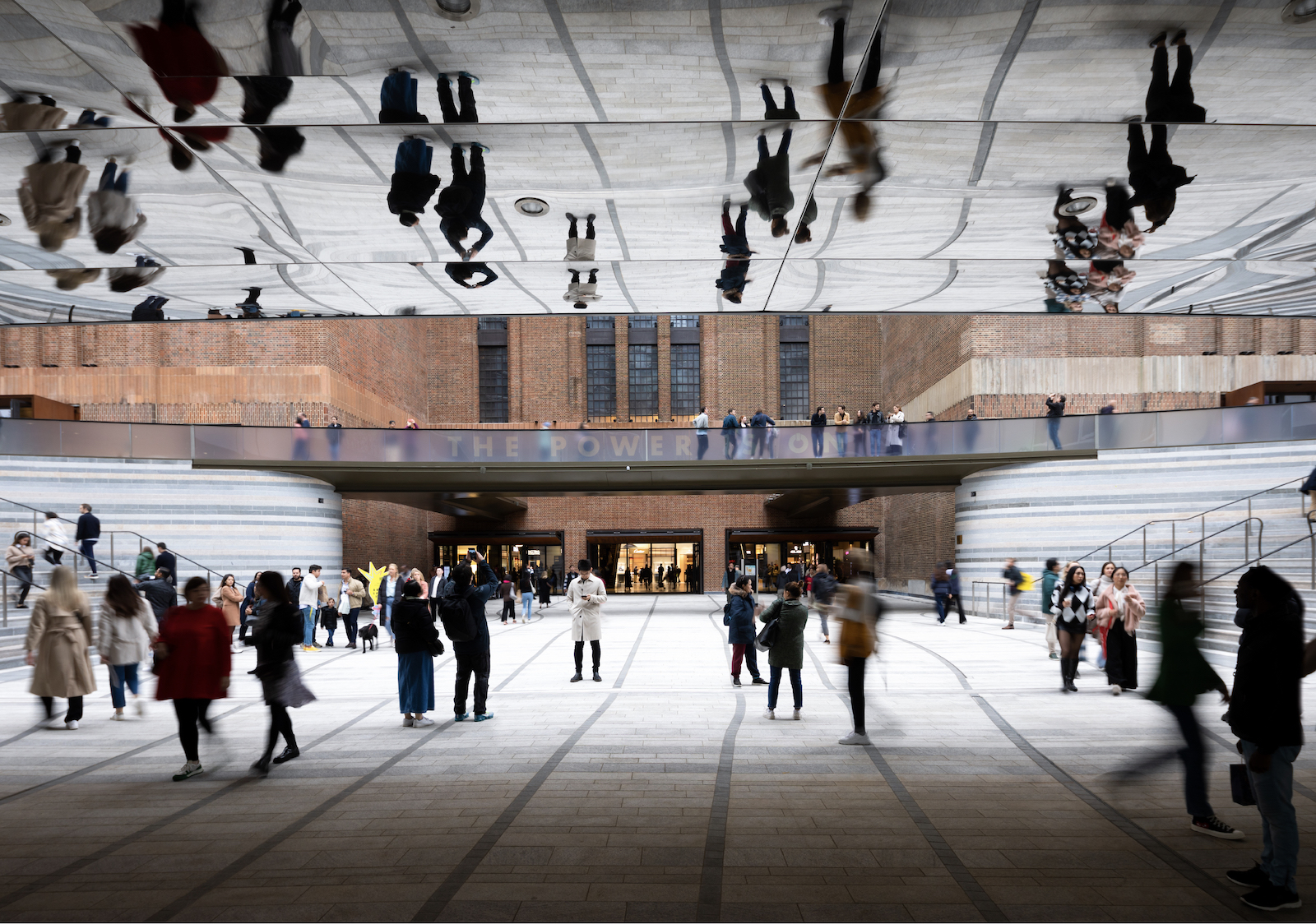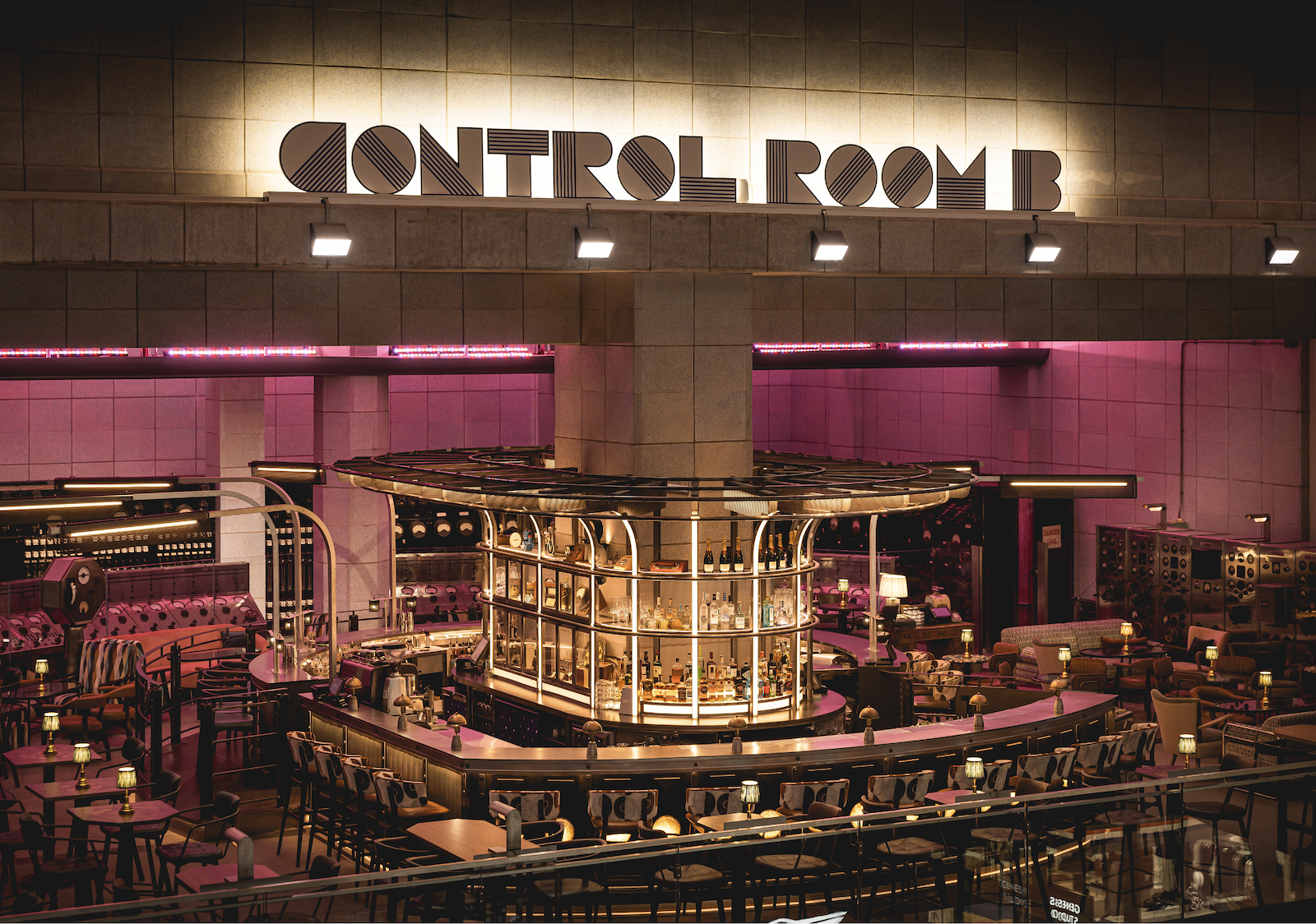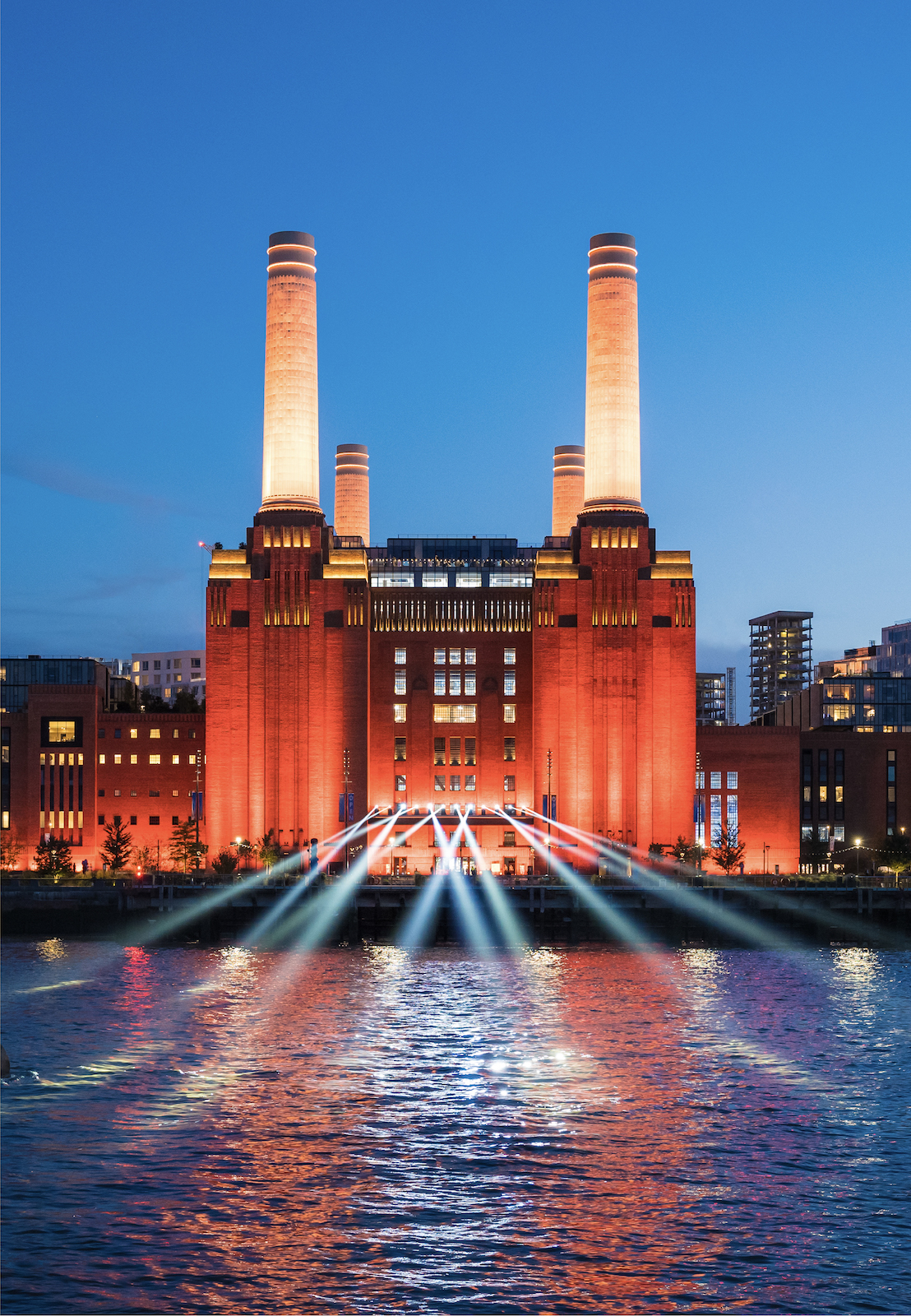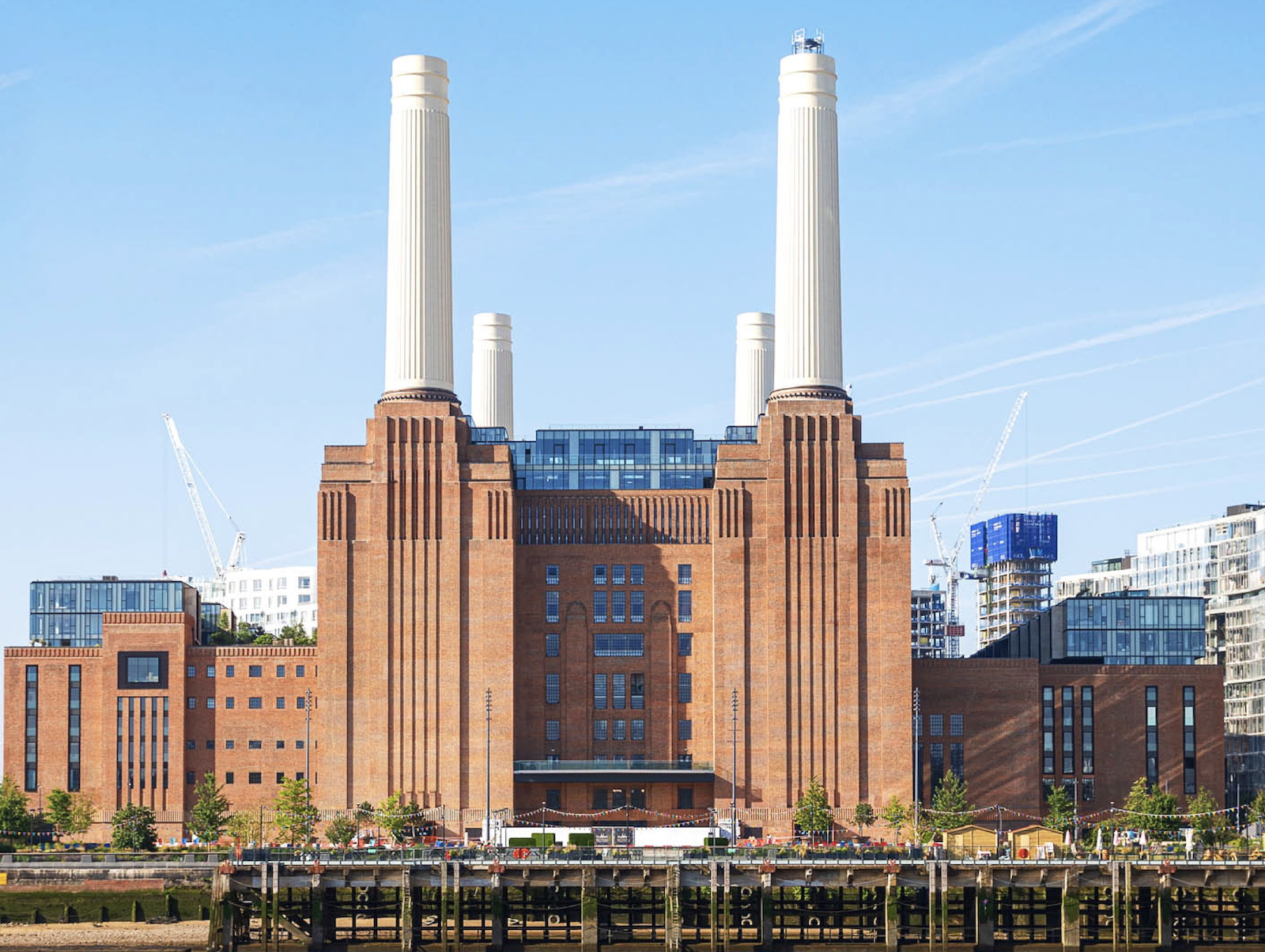When Apple moved its U.K. office into Battersea Power Station in January 2023, it marked an extraordinary rebirth for London’s most famous ruin. For almost 40 years, the immense industrial cathedral with its four towering chimneys had squatted, roofless and abandoned, in a prime location next to the Thames—difficult to demolish but seemingly impossible to restore. It was a sad sight. For 50 years, the power station had burned coal to generate electricity. Now it burned cash as a succession of development plans fell victim to the intractable problems of Battersea.

Photo by Brendan Bell.
Things changed when a Malaysian consortium consisting of two property developers—Sime Darby and SP Setia—and a state pension fund acquired the site in 2012. In October 2022, the beautifully restored Battersea Power Station opened to the public, something Sarah Banham, the development company’s head of communities and sustainability, who has worked at Battersea since 2006, says “was like watching your child walk down the aisle.” The bulk of the building was converted into a shopping centre. Luxury flats were embedded on upper floors, while the cavernous boiler house became Apple’s London HQ. The building is surrounded by flats, hotels, offices, shops, restaurants, and a new Tube station, while nearby railway arches were converted into a cinema, virtual reality arcade, brewery, and more restaurants. This left a bittersweet feeling among many Londoners, delighted to see Battersea given new purpose but uncomfortable with how the building has disappeared behind walls of glass designed by international architects such as Frank Gehry.
Battersea is now one of London’s best-loved buildings. It was a different story in 1927, when it was announced that a power station would be built in central London. MPs, mayors, the Archbishop of Canterbury, and George V’s physician lined up to complain, with one politician melodramatically claiming the power station would “kill every green thing within two miles of Battersea, rot all the buildings, and bleach all the babies.” To placate opponents, the London Power Company recruited architect Sir Giles Gilbert Scott to spruce up the existing design by engineer Leonard Pearce and architect James Theodore Halliday. Scott’s largest project to date had been Liverpool Cathedral, but his most ubiquitous was Britain’s classic red phone box.
Scott, grandson of Victorian architect Sir George Gilbert Scott, designed an industrial building that evoked an overwhelming sense of civic pride and almost Victorian grandeur. Halliday provided the exceptional art deco interior, including the impeccable Control Room A, with marble walls, parquet flooring and huge brass switches. It’s now reserved for private events. In the 1930s, this inner sanctum was so precious that workers had to wear felt overshoes to avoid damaging the floor.

Photo by Johnny Stephens.
The power station is actually two buildings that meet in the middle. The A Station, on the west side, was opened in 1933 while B Station was delayed by the Second World War and not completed until 1955, when the fourth chimney was installed. As a result, the two turbine halls, both now shopping galleries, have subtly different interior finishes. Control Room B has been turned into a ’50s-style space-age cocktail bar.
Another highlight is the glass viewing elevator—Lift 109—in one of the chimneys, offering splendid views over the Thames. These stacks, each more than 100 metres high and wider than a Tube tunnel, were originally designed to “clean” the smoke and ensure London was not covered in a blanket of smog. The furnaces didn’t just burn coal to create electricity—they also incinerated surplus banknotes from the Bank of England. Battersea had a population of dozens of stray cats, attracted by the eternal warmth.
Battersea’s distinctive profile and prominent location made it a landmark. It had a starring role on the cover of Pink Floyd’s Animals album (the one with the flying pig) and featured in dozens of films and TV shows. By 1983, it was used primarily as a filming location while politicians wrestled with what to do with the outdated building following decommissioning.
Battersea is three times larger than its younger sibling, Bankside Power Station, also designed by Scott and now better known as Tate Modern.
Battersea had been listed as a protected building in 1980, which meant it could not be demolished without permission from a planning authority—much to the annoyance, rumour has it, of Margaret Thatcher. Indeed, some have suggested it was only listed by a political rival to cause her irritation. A competition was organized to see what developers could come up with. The winning entry came from a consortium who promised to turn it into an indoor theme park, crammed with rides loosely themed around science and industry.

Photo by Charlie Round Turner.
This was the first scheme to crash and burn when it met the reality of Battersea Power Station, a building that was simply too big for its own good. Battersea is three times larger than its younger sibling, Bankside Power Station, also designed by Scott and now better known as Tate Modern. Its vast interior was difficult to light, impossible to fill. It also lacked public transportation. As a result, a series of developers came and went during these decades of failed dreams: a sports centre, a cinema, a theatre for Cirque du Soleil, and a soccer stadium for Chelsea FC were all proposed as Battersea mouldered. In 1997, Michael Jackson was given a tour while he sought a location for a “self-contained fantasy centre.” About a decade later, architect Sir Terry Farrell suggested simply leaving it as a “managed ruin” like an old abbey or medieval castle.
Londoners despaired. When the Malaysian consortium scooped up the site for £400 million in 2012, pledging to spend several billion on redevelopment, they’d heard it all before. Times have changed. The U.S. Embassy moved just down the road in Vauxhall, and this part of London—Nine Elms—is now crammed with new apartment blocks. That helped justify the construction of a new Tube station, making Battersea Power Station a more viable destination for offices as well as flats. While architects WilkinsonEyre set about restoring and adapting the station, the developers secured high-profile tenants for the shops and offices. There’s also a cinema, a children’s playground, and spaces for outdoor events such as ice skating and film screenings. You can even get there by riverboat.
The transformation is extraordinary, and it’s not finished. Building work will continue for the rest of the decade, with more offices, hotels, shops, and flats on the land around the power station creating a new town centre for London—a cooler counterpoint to Canary Wharf on the other side of the city. “With residents and office workers, we will have a population of 20 to 25,000 people,” Sarah Banham says. Some of those people got a shock during lockdown, when a new resident dialled into online rehearsals for the communal choir. It was Sting, who had recently moved into one of the flats around the power station. It had taken awhile, but Battersea was back.
Read more from our Summer 2023 issue.









